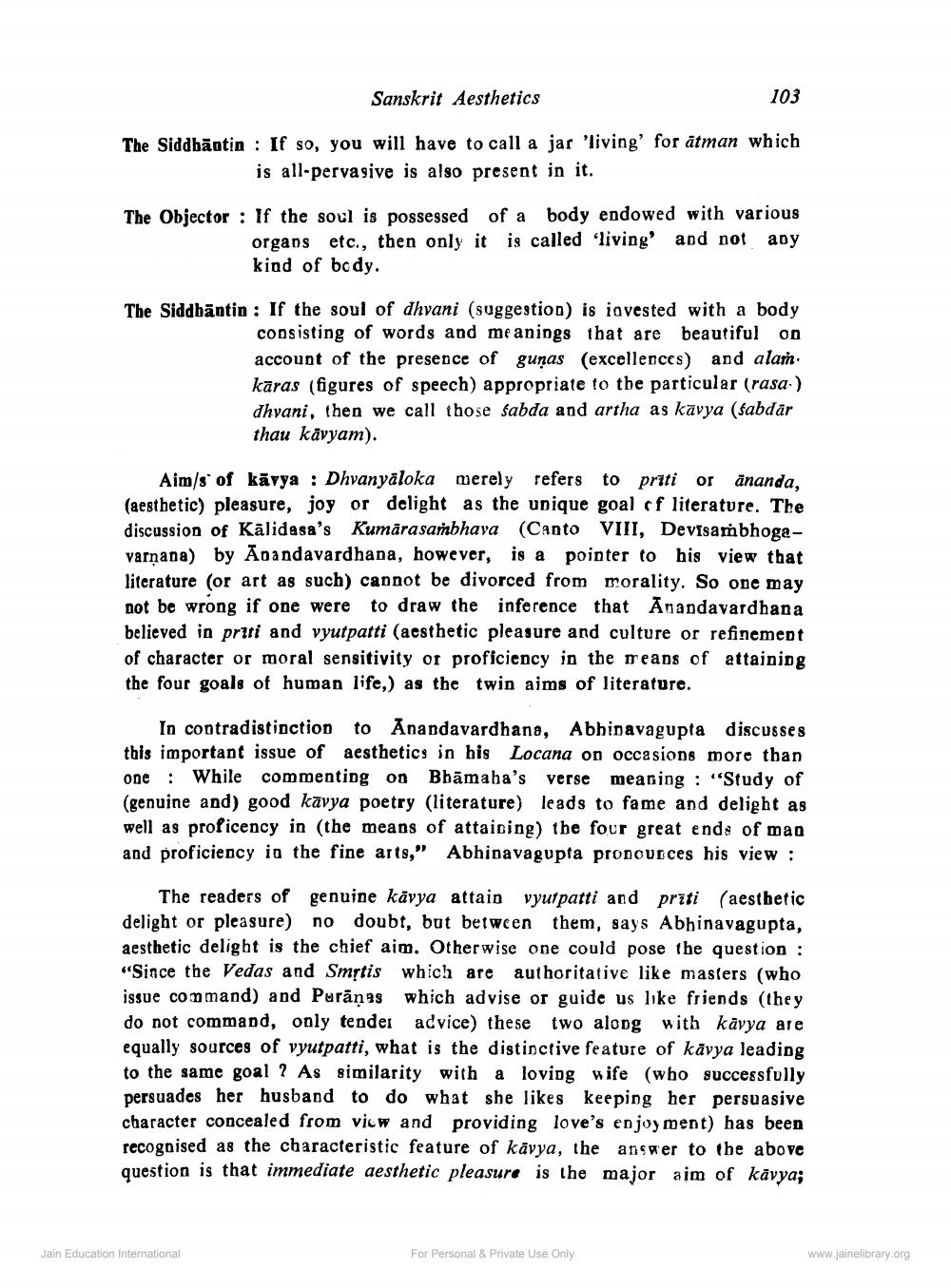________________
Sanskrit Aesthetics
103
The Siddhāntin : If so, you will have to call a jar 'living' for åtman which
is all-pervasive is also present in it.
The Objector : If the soul is possessed of a body endowed with various
organs etc., then only it is called 'living' and not any kind of body.
The Siddhāntin : If the soul of dhyani (suggestion) is invested with a body
consisting of words and meanings that are beautiful on account of the presence of gunas (excellences) and alam kāras (figures of speech) appropriate to the particular (rasa.) dhvani, then we call those sabda and artha as kavya (fabdar thau kävyam).
Aim/s of kāvya : Dhvanyaloka werely refers to priti oränanda, (aesthetic) pleasure, joy or delight as the unique goal of literature. The discussion of Kalidasa's Kumārasambhava (Canto VIII, Devisambhogavarnana) by Anandavardhana, however, is a pointer to his view that literature (or art as such) cannot be divorced from morality. So one may not be wrong if one were to draw the inference that Anandavardhana believed in prii and vyutpatti (aesthetic pleasure and culture or refinement of character or moral sensitivity or proficiency in the preads of attaining the four goals of human life,) as the twin aims of literature.
In contradistinction to Anandavardhana, Abhinavagupta discusses this important issue of aesthetics in his Locana on occasions more than one : While commenting on Bbāmaha's verse meaning : "Study of (genuine and) good kavya poetry (literature) leads to fame and delight as well as proficency in the means of attaicing) the four great ends of man and proficiency in the fine arts," Abhinavagupta pronounces his view :
The readers of genuine kavya attain vyutpatti and priti (aesthetic delight or pleasure) no doubt, but between them, says Abhinavagupta, aesthetic delight is the chief aim. Otherwise one could pose the question : "Since the Vedas and Smstis which are authoritative like masters (who issue command) and Purāņos which advise or guide us like friends (they do not command, only tender advice) these two along with kavya are equally sources of vyutpatti, what is the distinctive feature of kāvya leading to the same goal ? As similarity with a loving wife (who successfully persuades her husband to do what she likes keeping her persuasive character concealed from view and providing love's enjoyment) has been recognised as the characteristic feature of kavya, the answer to the above question is that immediate aesthetic pleasure is the major aim of kavya;
Jain Education International
For Personal & Private Use Only
www.jainelibrary.org




